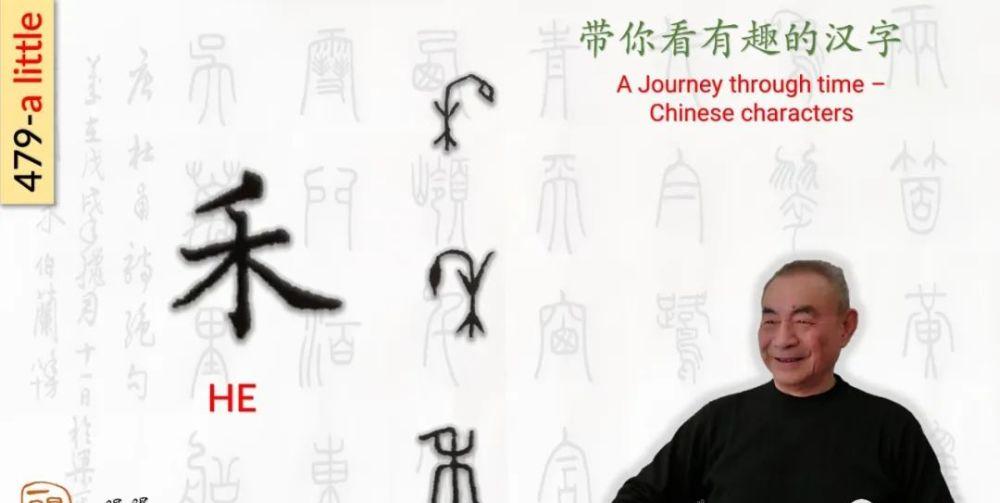The 80-year-old happy old man uses calligraphy
Demonstrate the origin of Chinese characters
Let's talk about the story of Chinese characters with you

Kanji Fun Talk: 禾
"He" (he2), which is a hieroglyph. The oracle bone word "禾" is very much like a ripe millet, the upper part is like a heavy grain ear hanging to one side, the middle part is like the leaves and straw of grain, and the lower part is a rhizome. The structure of the whole word is a mature millet hieroglyph.
"Grass", an ancient ancestor thousands of years ago, put the wild "weed" (that is, "dog tail grass"), after a long period of cultivation, finally became a major crop "millet" in the northern arid areas, that is, today we call "millet". During the Yin Shang period, "millet" was already widely cultivated and was one of the main rations at that time.
Jin Wen continued the oracle bone glyph, and the "He" character of the small seal was written as "wood" with a skim added to the upper part. Lishu continued the small seal glyph, and the strokes became straight, and the calligraphy was written as "He".
The original meaning of "grass" refers to millet, and later refers to all food crops. Tang Dynasty. Li Shen's "Two Ancient Winds. Mercy Nong": "On the day of hoeing, when the sun is noon, the sweat drops down to the soil." The word "grass" here can refer to either "millet" or a general term for all grains.
The Shuowen Jiezi explains: "He, Jia Gu also." Born in February, ripe in August, in time, it is called the grass. "
"He", before the Qin and Han Dynasties, was the proper name of "Millet". "Lü Shi Chunqiu. RenDi Chapter: "Now Zi Mei He, come zi Mei Mai? (This year there is a bumper harvest of meihe, and the next year there will be a bumper harvest of meimai.) )
"He" was later used as a general term for cereal crops, and "hemiao" mostly referred to rice plants.
"He" is an important word next to the edge, and one is used to indicate words related to crops, such as "xiu, stalk, straw, straw, rice, straw" and so on; The other category is used in words related to crop behavior, such as "profit, seed, scale, rent, commission, multiplication, transfer" and so on.